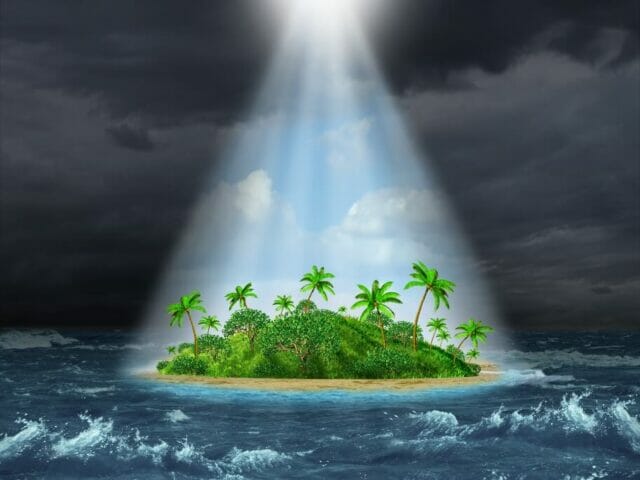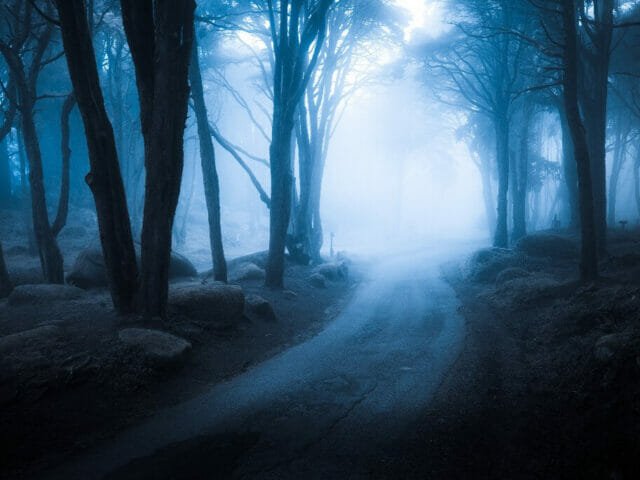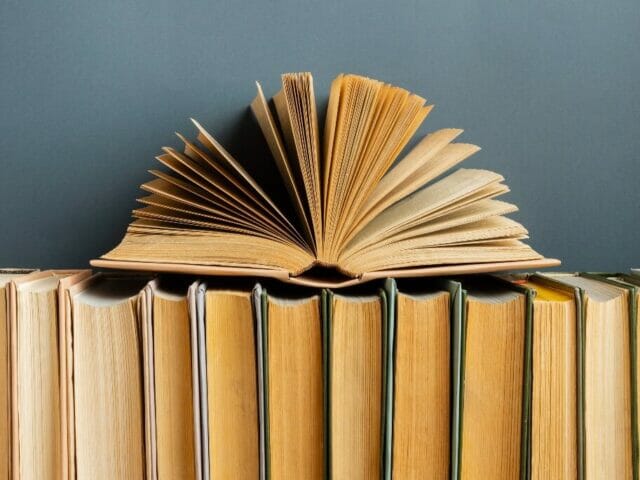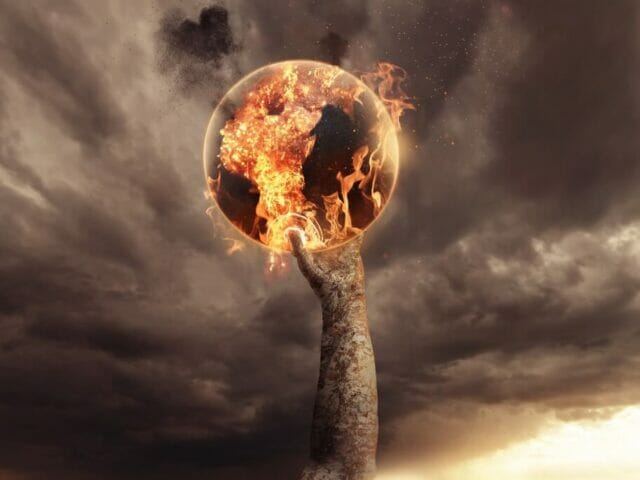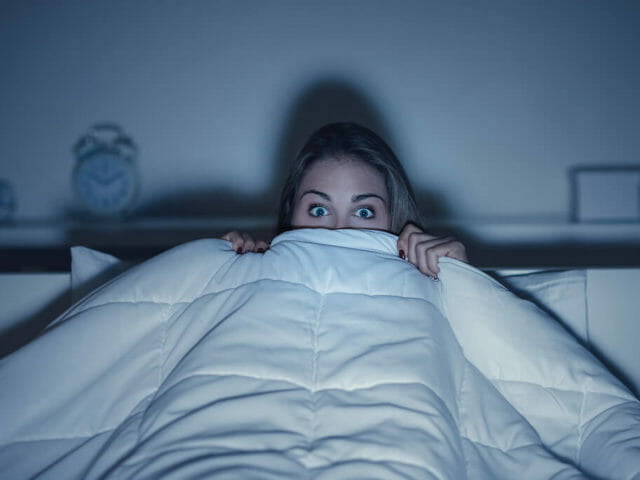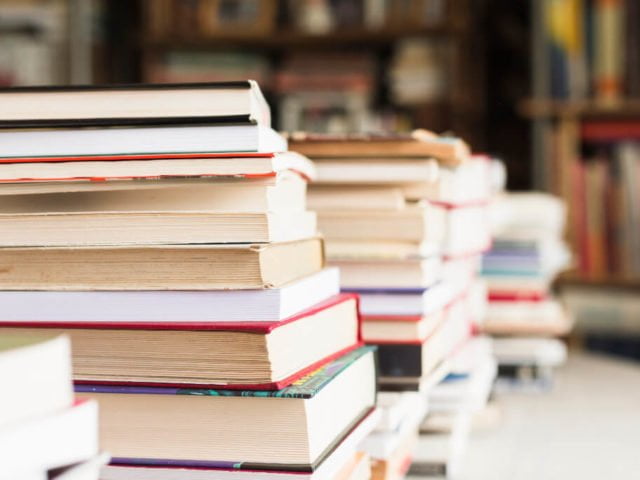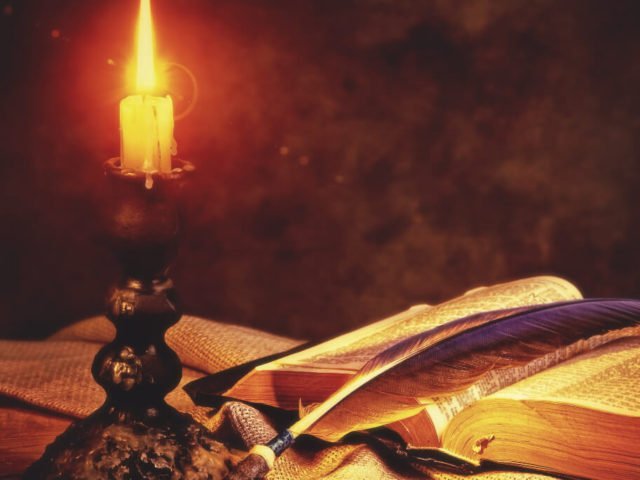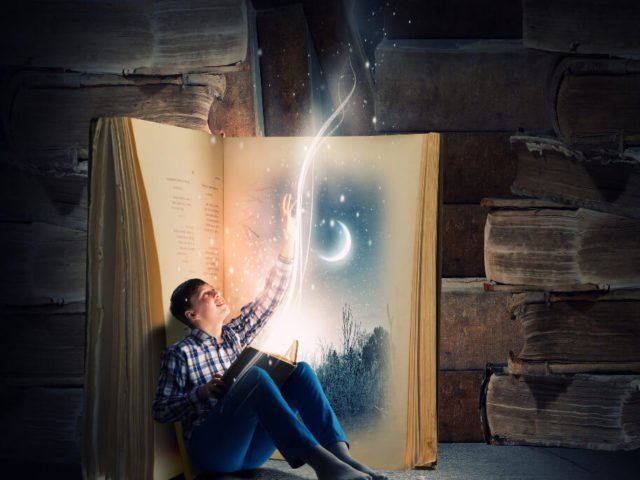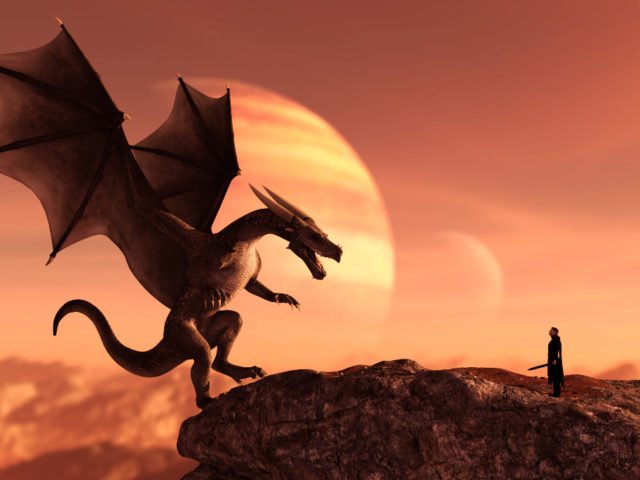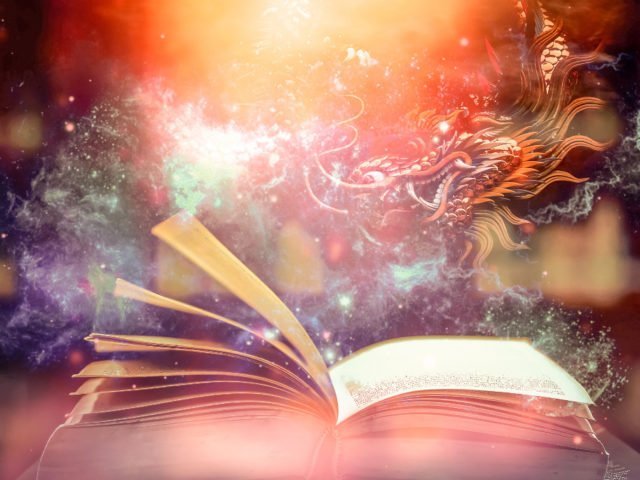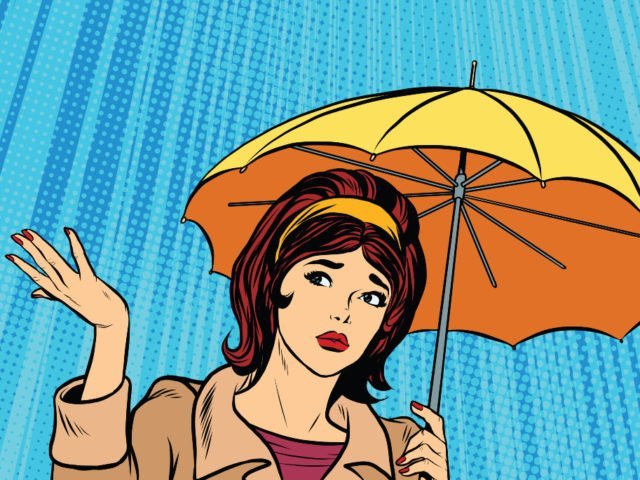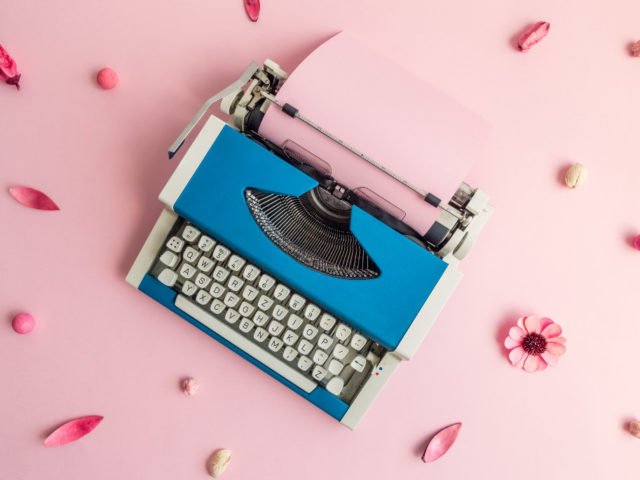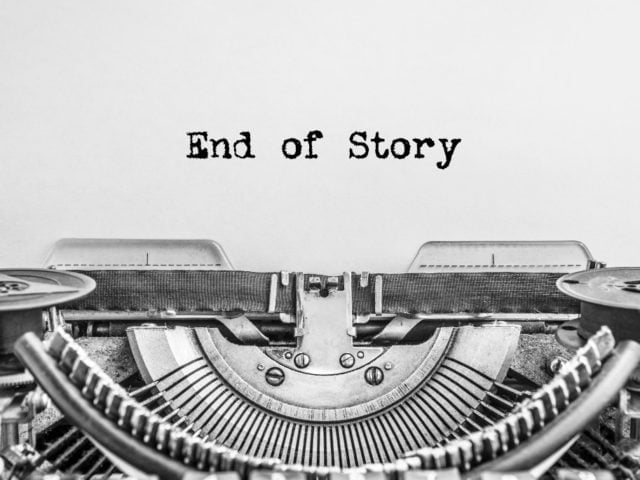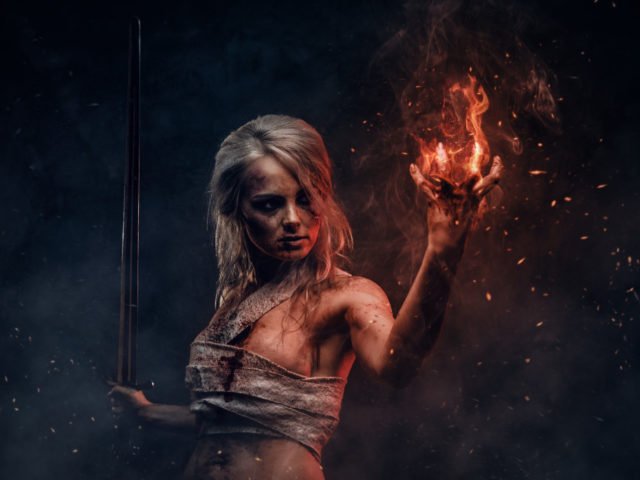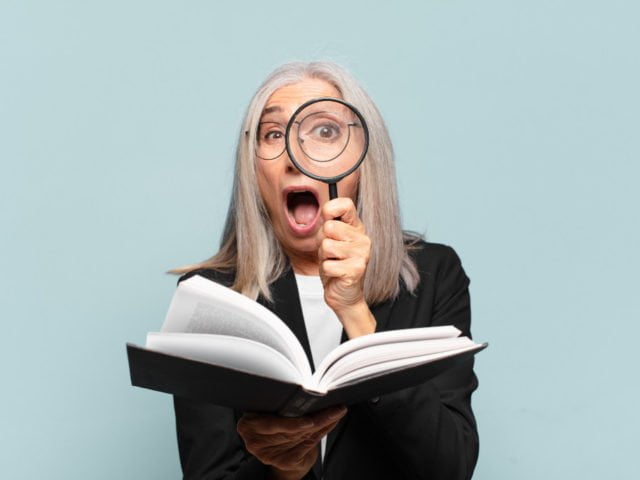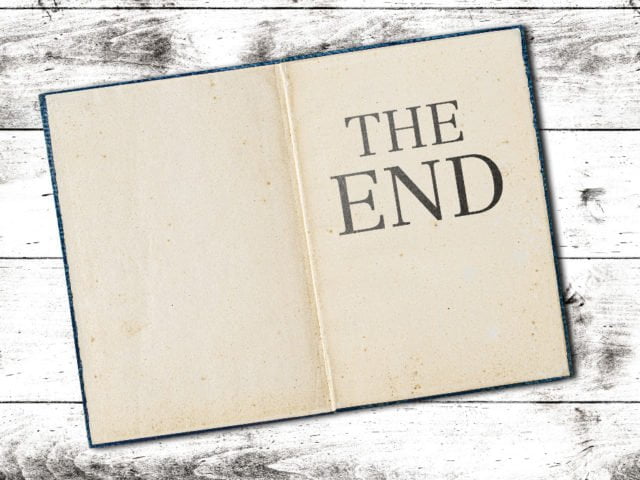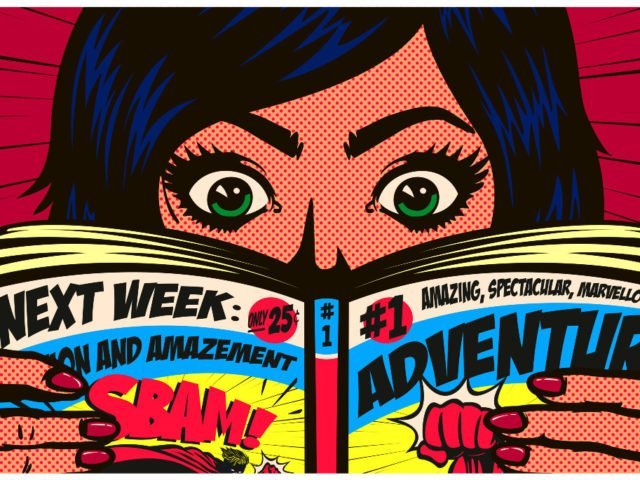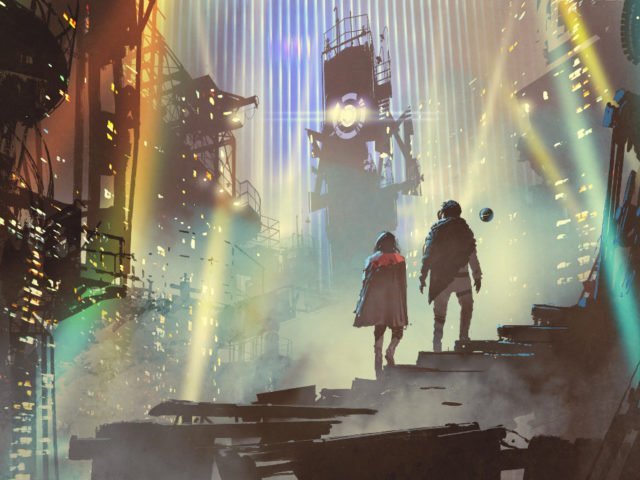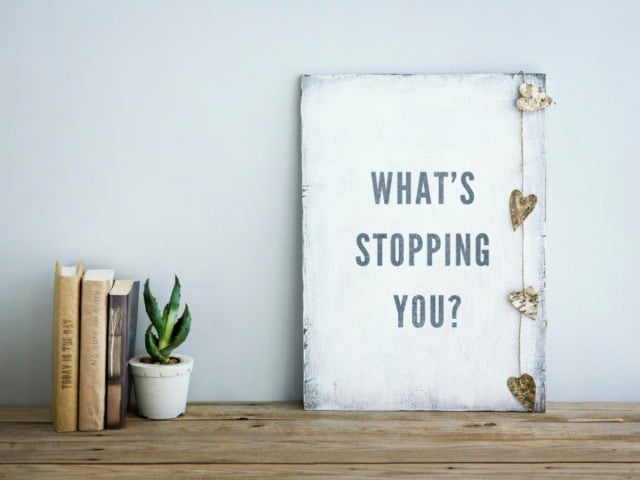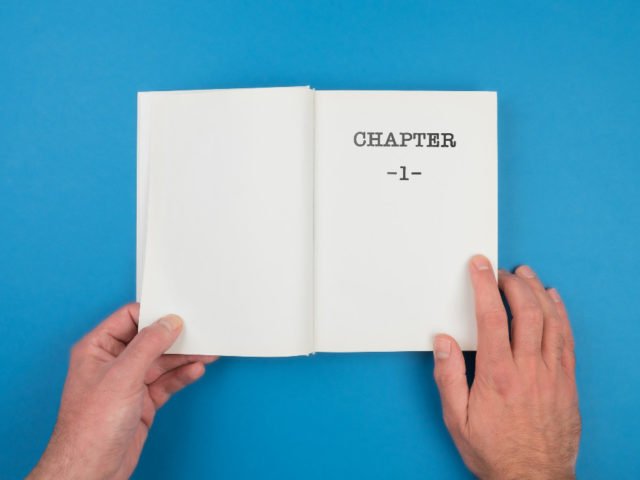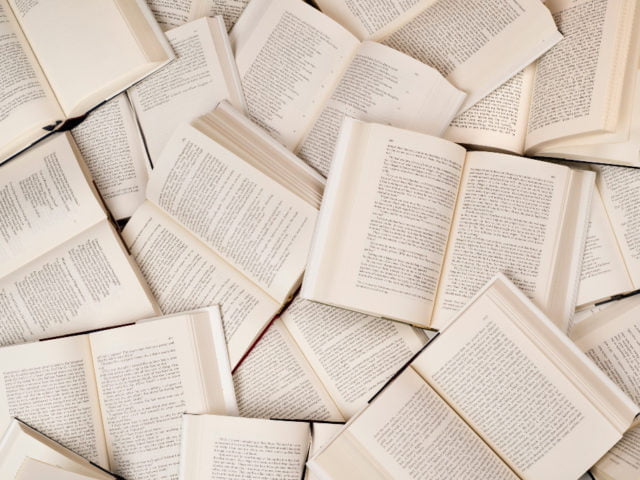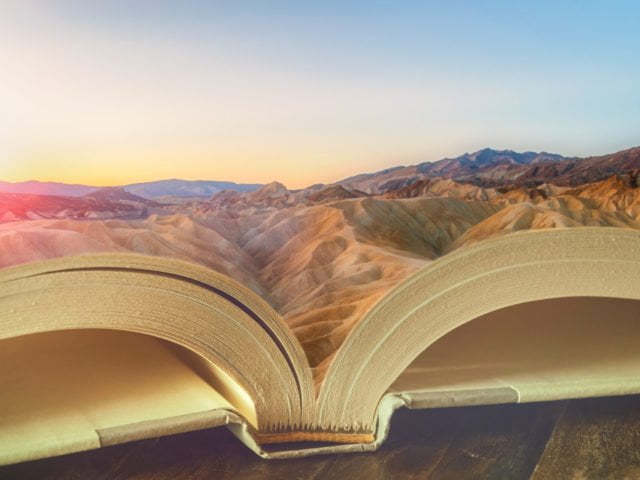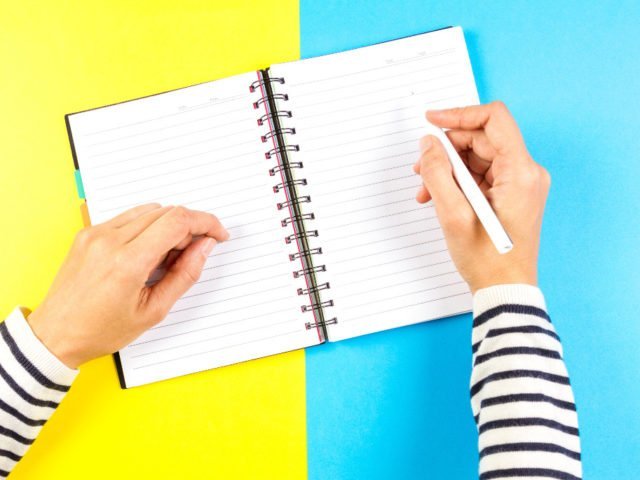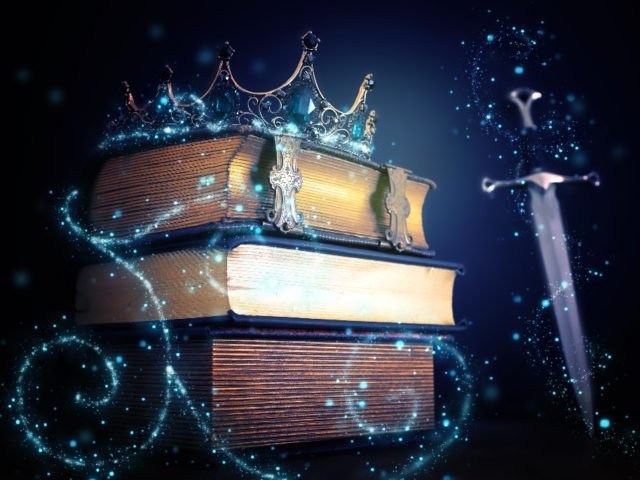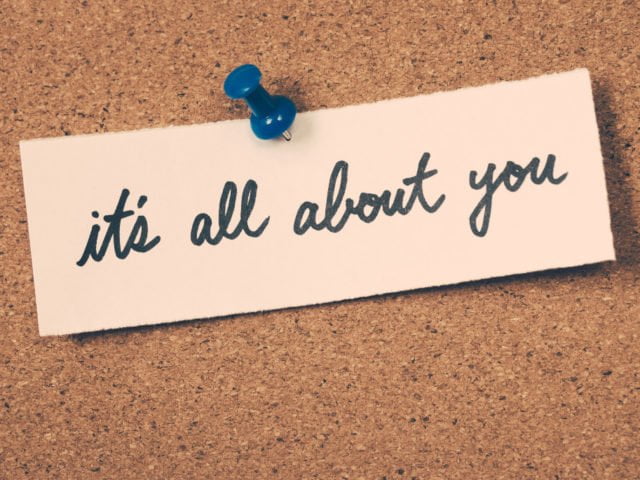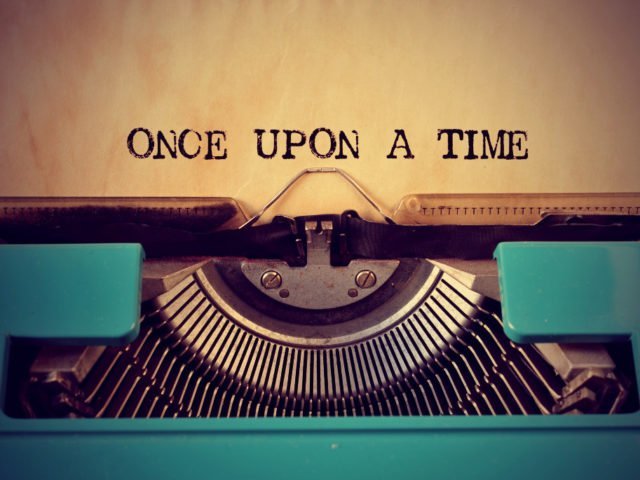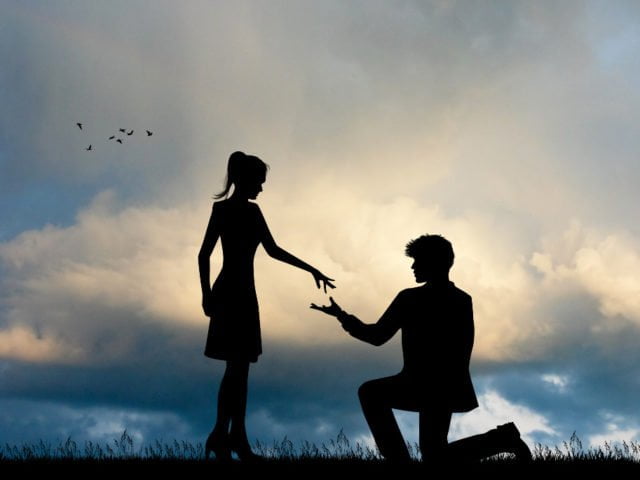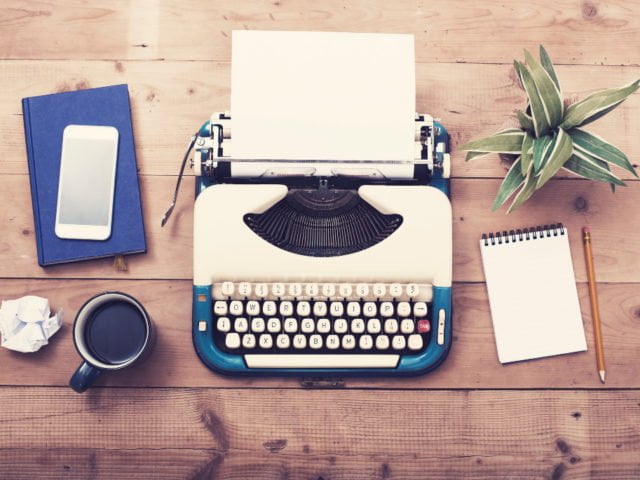From a young age, I gravitated towards anything that might spook or scare me, finding a thrill in the fear and the curling of toes, drawn always to the dark and the gothic.
I am still the same today, and people have been fascinated with these fictional worlds filled with ghosts - where usually your imagination alone can be your worst enemy - for hundreds of years. There is psychology behind this, but we won’t go into that here. Instead, let’s celebrate the genre that sets hearts racing, that makes characters out of eerie settings and that lets you explore that space beyond reality.
Our love of the gothic must surely come from the exploration of unknown worlds, dark places and the supernatural; all those things that are usually out of reach for us but that we can leave safely behind once we close the pages. It’s a genre that has reinvented itself many times over the centuries and birthed numerous sub-genres, and which still to this day attracts readers of all ages.
In this guide, we will discuss all things gothic literature, its inner workings and its influence on our wider cultures, taking a look at key tropes, themes and motifs. And if you aspire to be a gothic writer yourself, this guide will show you everything you need to know about gothic fiction and its essential ingredients.
What Is Gothic Literature?
There are many definitions of what gothic literature is, but all state that it is a story of fear and terror with emotional extremes and dark themes. It has regularly been used as a literary device to highlight social issues and injustices, which is possibly one reason for its enduring popularity.
Gothic literature rose from the Romantic period of the eighteenth century and you can trace its roots to the architecture of medieval Europe, with buildings that were full of intricate details and cavernous spaces, and ornate decoration that gave us gargoyles and grotesque waterspouts - foreboding spaces that looked like they had a story to tell. Romanticism was characterised by emotion and individualism, nature and the glorification of medieval times. Gothicism embraced these elements, too, but it focused more on the darker side of humanity, particularly evil, sin and purgatory.
The root of gothic literature is widely attributed to Horace Walpole’s Castle of Otranto in 1765 - he even put the word ‘gothic’ in the subtitle of the second edition. But what did that word mean to him all those years ago? It meant ‘barbarous’ and ‘deriving from the Middle Ages’, not words we might associate with it now, but from his novel trick, he spawned an entirely new genre. One which included the supernatural, the classic gothic tropes of doors closing and floorboards squeaking, and most importantly a frightening old building.
This is the heart of gothic fiction - the things that lurk in the corners both in reality and in the mind. But it was the gothic stories of vulnerability and conflict that were relatable to society, and so gothic literature flourished.
Let’s take a closer look at the elements that make up gothic fiction.
Key Elements Of Gothic Literature
Place
Probably the most important part of the gothic novel is the setting. Most will think instantly of castles and gloomy houses, of heaths and moors, of isolated, dark corners of the world. Many gothic novels contain a haunted house or building, but in reality, the house comes to represent more than just bricks and mortar. It is a mirror of the mind, of compartmentalising, of locking away the truths of a life, before the lies and deceit come back to haunt our characters.
Physically, too, the setting typical of gothic literature is hidden, pulling our characters further from society and further from help, leaving them to the elements of the Earth and the evil that might be seeking them.
Think of Jonathan Harker becoming trapped in Count Dracula’s castle, or the secrets of Manderley in Rebecca, or the brooding, sweeping moors of Wuthering Heights. The place becomes a character, influencing our protagonist from the first page.
The Supernatural
Can we call gothic fiction gothic without a ghost or two? Or at least the threat of a ghost? Sometimes, simply, it is all in the mind, but this is where gothic literature stands apart from all other genres - your imagination does the work for you. What might be there is often far scarier than reality. But what gothic literature does so well is present us with a world of doubt, particularly about the supernatural and spiritual. It presents the possibility of things beyond reason and breaks down the limits of our everyday lives.
Ghosts bring with them a demand, a curse or a plea. Out of their proper time and place, they disrupt our sense of what is present and what is past, but more about this later.
Atmosphere
Gothic literature is dripping in atmosphere, probably more so than any other genre. Place, as mentioned above, plays a big part in the setting of the atmosphere, but it goes much deeper than that. Atmosphere comes from the writer’s tone and use of language, from the implied, from the internal and external conflicts, from the characters themselves, and from the building of suspense and mystery.
Often, too, the atmosphere created is claustrophobic. Settings are small, with little opportunity to escape.
Secret Places
Gothic literature is full of secret places - rooms, entire wings, attics. Places that are out of bounds for the protagonist and which, like a child drawn to a jar of sweets, call out for them to go there against all better judgement. What if Belle hadn’t gone to the forbidden west wing and found the rose in Beauty and the Beast? And let’s not forget the secret places in our characters’ minds. They are often places that a reader won’t want to go to either.
Damsels
When we look at the classic gothic novels, a damsel in distress is usually a central part, and this plays into the regular gothic theme of an imbalance of power - women were seen as weaker and often victims of violent acts.
In an opposite way, women are also often portrayed as evil, possessed characters in contrast to their perceived motherly qualities.
Time
Time plays a key part in gothic fiction. There is a preoccupation with glorifying the past. It is typical for there to be elements of the past clashing with the present, bringing with it threat, terror and truth. But it isn’t simply a case of the past catching up with the characters. The past will invariably be accompanied by the uncanny - something frighteningly unfamiliar. The past literally deranges the present.
Terror Vs Horror
There is a clear difference between a reader who enjoys being terrorised and a reader who enjoys being horrified, and here lies the difference between gothic fiction and horror fiction. Ann Radcliffe, a pioneering gothic writer from the late eighteenth century said that terror merely suggests horrific things rather than showing them. Terror is concerned with the psychological experience of being full of fear and dread and thus recognising human limits. She said:
Terror and Horror are so far opposite, that the first expands the soul and awakens the faculties to a high degree of life; the other contracts, freezes and nearly annihilates them.Ann Radcliffe
There is a subtlety to gothic stories that allows the mind to wander, a mere hint or suggestion is often enough for us to believe.
Melodrama
Gothic fiction is dramatic because the stakes are high. Characters are usually troubled, with bad things happening to them and around them. Expect much swooning, fainting and screaming. They often, also, have troubled minds.
Burdened Male Protagonist
The men in classic gothic literature are usually wealthy, entitled, and hold a lot of power. Or they may be burdened by a mad wife they need to hide away, or required to marry somebody they don’t love. They represent the best and worst of society and often must face the demon within them in their search for peace. A perfect example of the burdened male protagonist is Maxim from Rebecca by Daphne Du Maurier.
Death
When we think about gothic stories, death is usually a central part of it. Deaths in the past, the threat of imminent death of the protagonist or wider characters, the death of a way of life, even. Let’s look at the opening of Sing, Unburied, Sing by Jesmyn Ward:
I like to think I know what death is. I like to think it’s something I could look at straight. When Pop tell me he need my help and I see that black knife slid into the belt of his pants, I follow Pop out the house, try to keep my back straight, my shoulders even as a hanger; that’s how Pop walks. I try to look like this is normal and boring so Pop will think I’ve earned these thirteen years, so Pop will know I’m ready to pull what needs to be pulled, separate innards from muscle, organs from cavities. I want Pop to know I can get bloody. Today is my birthday. Sing, Unburied, Sing by Jesmyn Ward
Those two opening lines set the tone of this novel perfectly. Death is the theme of this beautifully devastating Southern Gothic novel, and that is something that is made clear from the start. I don’t think it is possible to have gothic without death.
Key Tropes In Gothic Fiction
Gothic fiction has a set of tropes that are seen over and over again. These are devices used in every novel that the reader will recognise instantly.
Here are some of the main ones:
Lights
The flickering of lights points to something otherworldly in control. Or a light in an abandoned place tells you something is there that shouldn’t be.
Weather
Nothing says gothic more than inclement weather. A good thunderstorm suggests impending doom, high winds are disorienting for our characters and imply godly forces are in play. Typically, classic English gothic texts take place on windy, barren and isolated moors, but by contrast, the sub-genre novels of the Southern Gothic are set in heat-sweltered southern US states, using the dusty, dry environments to show isolation in a different way. These are places that are hard to endure.
Noises
Things that go bump in the night. There is always a noise that might draw your character from their bed in the dead of night to investigate. And, of course, you know that is the last thing they should be doing.
Laughter
There is truly nothing spookier than hearing a child laugh from somewhere deep in the heart of a gloomy, abandoned house. It is a definite sign that something bad has happened there and you should likely run the other way.
Animals
Savage nature- crows, ravens, and wolves have all been vilified in gothic fiction, used as symbols to impress the coming darkness.
Imprisoned Characters
There is nothing more gothic-esque than an imprisoned character. Think of Mr Rochester’s wife locked away in the attic in Jane Eyre by Charlotte Bronte, or of Paul Sheldon in Stephen King’s Misery being held captive by a crazed fan.
Key Themes In Gothic Literature
What I love more than anything about gothic fiction are the themes that are tackled. A ghost story is never simply a ghost story, a story of madness is never simply a description of insanity. Gothic writers want to convey their message through the story and the underlying meaning of the story - the theme. And the themes of gothic literature draw attention to the very dark side of humanity.
Here are some of the main themes of Gothicism:
Appearance vs Reality Doppelganger/Duality of humanity Isolation and seclusion Challenging gender roles Imbalance of power Corruption of innocence Place Romance Injustice Searching for the truth
Gothic Fiction Motifs
Motifs are recurring symbolic references that a writer uses to convey an idea. Gothic fiction is full of them, and writers use them repeatedly throughout their novels to reinforce the point they are trying to make.
Here are some of the main gothic motifs:
Dreams, nightmares and visions Mistaken Identity Omens and prophecies Light vs darkness Secrets Madness The Uncanny
Examples Of Gothic Tales
Some of the greatest stories have been spawned by the gothic genre. Let’s look at the most popular classic gothic novels.
The Castle of Otranto by Horace Walpole is considered the first gothic novel, written in 1764. Set in a haunted castle, the novel combines Walpole’s love of medieval and terror. The Mysteries of Udolpho by Ann Radcliffe, written in 1794, combines the typical gothic tropes with the author’s love of gothic romance. There’s a crumbling castle, a villainous man, supernatural happenings and a persecuted heroine.Frankenstein by Mary Shelley is a story known the world over. Here we have the archetypal mad scientist and his monstrous creation. The novel centres around Victor’s isolation from society as he delves deeper and deeper into his studies and experiments, losing sight of his responsibilities through his determination to achieve something memorable. In The Hunchback of Notre Dame by Victor Hugo, the setting in the gothic Notre Dame Cathedral is a full homage to gothic architecture. The classic gothic novel tackles the medieval sin of lust and presents it as natural, at the same time challenging our perception of beauty and what it means to judge people on appearances. The Fall of the House of Usher by Edgar Allen Poe is considered by some to be the start of the Southern Gothic sub-genre. It has the personified house (“There I could see reflected in the water a clear picture of the dead trees, and of the house and its empty eye-like windows.”), the madness, the typical gothic tropes listed above. But at the heart of this story is decline - the house is split between crumbling walls and perfection, which mirrors the well-being of the characters, the individual, the Usher bloodline, the familial and the collective South. Wuthering Heights by Emily Bronte hits all the right gothic notes - an eerie, gloomy setting, with the potential of ghosts intervening in the present. Again, this classic tale combines Romanticism with Gothicism. The Strange Case of Dr. Jekyll and Mr. Hyde by Robert Louis Stevenson is the ultimate gothic story concerning the duality of human nature. Although not always thought to be a true gothic novel, The Picture of Dorian Gray by Oscar Wilde contains the symbol of the devil, devil pacts, and the motif of an ever-changing painting, representing the change in Dorian as his character ages. Dorian’s terror lies in his need to stay forever young and maintain his youthful beauty - a need that takes him down a murderous path. Dracula by Bram Stoker is probably one of the best-known examples of vampire fiction. But as with all good gothic tales, the themes are what elevate it from simply a blood-sucking story. It draws a picture of Victorian society and the need to lock away people deemed mad or insane, especially the more regularly afflicted women. Isolation and madness are closely linked in this novel, as is the Christian belief of freeing your soul for heaven, which is prominent in many of the works of early gothic writers.The Turn of the Screw by Henry James is a true ghost story with all the gothic elements you would expect - ambiguity about the presence of ghosts, external views vs internal feelings, perception vs reality, and secrets in all the characters.
Now let’s take a closer look at some important contemporary gothic novels from the last hundred years.
Rebecca By Daphne Du Maurier
Rebecca is probably one of the best novels ever written (bold statement, I know!) and is a perfect example of contemporary gothic. The novel takes us to Manderley, an imposing home on the isolated Devon coast where the unnamed narrator takes over the role of Mistress of the house. But lurking in every corner is the memory of her husband’s dead wife, Rebecca. Again, the past impacts the present, but the novel really is a masterclass of gothic literature. It addresses themes of isolation, which is such a common thread through the genre, and imprisonment, both literal and of the mind.
But the novel particularly excels at linking these themes with place. Manderley is a character in itself which imprints its shackles on the narrator’s mind, sending her to the brink of insanity (helped along nicely by the trickery of Mrs Danvers, of course). Du Maurier creates an atmosphere of threat (a key gothic element mentioned above) as the narrator arrives at Manderley:
…on either side of us was a wall of colour, blood-red, reaching far above our heads. We were amongst the rhododendrons. There was something bewildering, even shocking, about the suddenness of their discovery. The woods had not prepared me for them. They startled me with their crimson faces, massed one upon the other in incredible profusion, showing no leaf, no twig, nothing but the slaughterous red, luscious and fantastic, unlike any rhododendron plant I had seen before….And these were monsters, rearing to the sky, massed like a battalion, too beautiful I thought, too powerful; they were not plants at all.Rebecca by Daphne Du Maurier
Can you see how Du Maurier personifies the rhododendrons, creating something threatening from something usually natural and beautiful? This sets up how Manderley will control the protagonist.
Power and control is another theme of Rebecca, but it is rarely physical power that is shown, but rather knowledge wielded over those who are less informed. How can you ever take control if you know nothing of what has come before and those around you know everything? The power will always be with them, regardless of their social status. And this plays into the feelings of isolation and imprisonment for the narrator.
The Haunting Of Hill House By Shirley Jackson
No live organism can continue for long to exist sanely under conditions of absolute reality; even larks and katydids are supposed, by some, to dream. Hill House, not sane, stood by itself against its hills, holding darkness within; it had stood so for eighty years and might stand for eighty more. Within, walls continued upright, bricks met neatly, floors were firm, and doors were sensibly shut; silence lay steadily against the wood and stone of Hill House, and whatever walked there, walked alone.The Haunting of Hill House by Shirley Jackson
Please, do come in…. or maybe not? This is the opening of The Haunting of Hill House by Shirley Jackson, and here we have the master at work again. A perfect haunted house novel that hits all the right gothic notes.
Beloved By Toni Morrison
I couldn’t write an article about gothic fiction without including Toni Morrison’s Beloved. This is a pure southern gothic novel that forces readers to face the long-lasting, damaging impact of slavery. It doesn’t shy away from brutality, and has all the elements of gothic fiction that you would expect - death, a haunted house, a ghost, and a past impacting on the present.
124 was spiteful. Full of baby’s venom. The women in the house knew it and so did the children. For years each put up with the spite in his own way, but by 1873 Sethe and her daughter Denver were its only victims. The grandmother, Baby Suggs, was dead, and the sons, Howard and Buglar, had run away by the time they were thirteen years old - as soon as merely looking in a mirror shattered it (that was the signal for Buglar); as soon as two tiny handprints appeared in the cake (that was it for Howard). Neither boy waited to see more.Beloved by Toni Morrison
The Woman In Black By Susan Hill
There is a deep, creeping sense of dread in The Woman in Black, which Susan Hill conjures so well with her atmospheric writing. Eel Marsh House is a typical gothic building, claustrophobic, spooky and isolated, and Hill uses all the classic gothic tropes that readers of the genre would expect to great effect.
So I thought that night, as I laid my head on the soft pillow and fell eventually into a restless, shadowy sleep, across which figures came and went, troubling me, so that once or twice I half-woke myself, as I cried out or spoke a few incoherent words, I sweated, I turned and turned about, trying to free myself from the nightmares, to escape from my own semi-conscious sense of dread and foreboding, and all the time, piercing through the surface of my dreams, came the terrified whinnying of the pony and the crying and calling of that child over and over, while I stood, helpless in the mist, my feet held fast, my body pulled back, and while behind me, though I could not see, only sense her dark presence, hovered the woman.The Woman in Black by Susan Hill
The Last House On Needless Street By Catriona Ward
This very recent novel (2021) crosses many genres in my opinion. It is a psychological thriller with moments of pure horror, but it also ticks many of the gothic notes, too. There’s a house, for a start, and this house is boarded up and very creepy. There are bad things that happen there. There’s a cat narrator requiring readers to suspend their disbelief. There are grotesque happenings. But more importantly, there is a past that plays into the present, and that is at the heart of every gothic story.
The past is close tonight. The membrane of time bulges and strains. I hear Mommy in the kitchen, talking to the Chihuahua lady. Mommy’s telling her about the thing with the mouse. That was where all this started. I stop up my ears and turn the TV up, but I can still hear her voice. I remember everything about the thing with the mouse, which is unusual. My memory is Swiss cheese, in general.The Last House On Needless Street by Catriona Ward
I can’t say much more about this novel because I wouldn’t want to ruin the brilliance of it - but please do read it.
Gothic novels are as popular now as they have ever been, so let’s discuss why that might be.
The Gothic Genre’s Prevailing Popularity
The gothic genre has gone through many revamps and spawned many sub-genres over the centuries, such as Southern Gothic and psychological gothic horror, but it is still as popular today as it ever was. We, as inquisitive humans, want to explore the possibility of the ‘other’, the unknown that brings us fear, and literature is a great way to do that. But Gothicism also shines a light on the injustices of society, which again is a huge draw for readers. There is real depth to the storytelling that goes far deeper than simply the hauntings of a ghost or the blood-sucking of vampires.
Gothicism can be seen across the world, accessible to all cultures, all with their own histories to retell through the uncanny. A whole fashion exists around the world of the undead, and let’s not forget the other forms in which the gothic is celebrated - film and television, poetry, art, music, and computer games. I don’t see gothic literature going anywhere and I’m excited to see how it transforms itself as societies shift around the world.
But put simply, I think we will always have an obsession and interest in the past, and that is why I think Gothicism will endure as it shines its light in all the dark corners of humanity.
Frequently Asked Questions
What Are The Five Main Elements Of Gothic Literature?
Gothic novels all have a few major elements in common:
A dark and gloomy setting, such as a castle or house A threatening atmosphere Supernatural elements, such as a ghost, or the idea of one Terror that plays with your perception of reality Death
What Is Considered Gothic Literature?
Gothic stories are those that fill readers with terror. They will follow a set of gothic tropes employed to spook and haunt both characters and readers, and they will invariably be set in haunted houses or castles, or in isolated places full of foreboding.
Why Is It Called Gothic Literature?
Gothic literature derives from the gothic architecture of medieval times, based on a love and admiration of that period of time.
What Makes A Good Gothic Story?
A good gothic story will have a gloomy setting, lots of atmosphere, supernatural elements, and a sense of terror. It will play with the readers\' idea of reality and the bounds of humanity, it will terrorise and spook, it will clash the past and the present, and it will challenge a reader’s understanding of society.
Writing Gothic Fiction
Gothic literature has a long and rich history and has had a huge bearing on wider culture across the centuries.
As gothic writers, it is important to understand this history, to know what has come before and therefore what readers might expect from us as we pen our own gothic stories. But, of course, to know the rules is to also know how to effectively break and invert them.
Let’s keep telling these dark and twisted stories so that in centuries to come the art of Gothicism is still very much alive, unlike the ghosts that might grace those pages.



